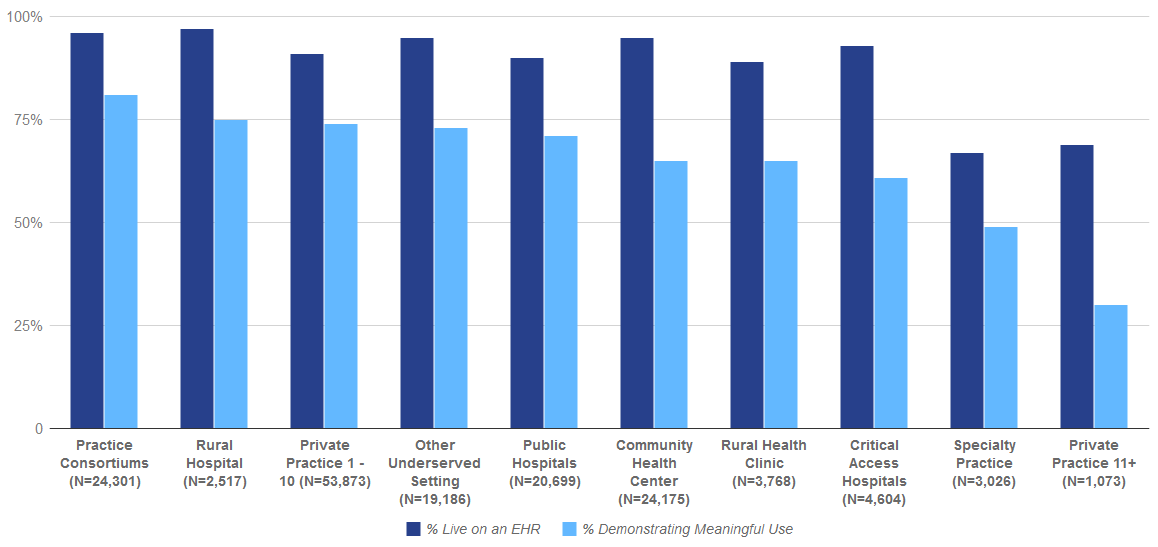
Over 90 percent of Regional Extension Center (REC) enrolled providers are live on an EHR, with three-quarters of enrolled providers demonstrating meaningful use (MU) of certified EHR technology (CEHRT).
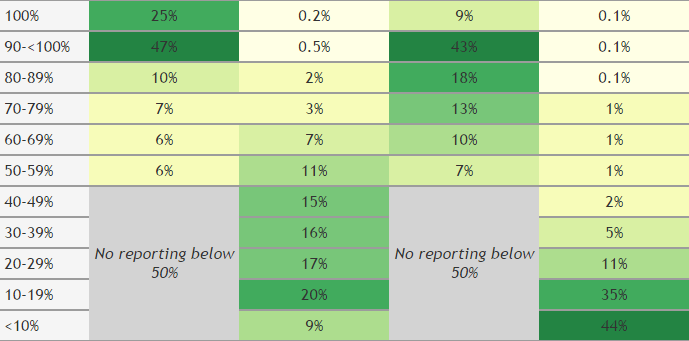
The data presented here reflect eligible hospital, Critical Access hospital, and eligible professional reporting on electronic exchange measures as defined for 2014, and indicate that significant progress must be made to reach a patient-centered, fully…

Electronic report to Immunization Information Services (IIS) was an optional measure for participants at stage 1 of the Medicare EHR Incentive Program, and a required measure for stage 2. Since 2011, electronic IIS reporting among eligible professionals…

As of 2014, 80 percent of non-federal acute care hospitals have the capability to electronically query patient health information from external sources, an over 30 percentage point increase from 2013. In 2014, 48 percent of hospitals routinely queried…
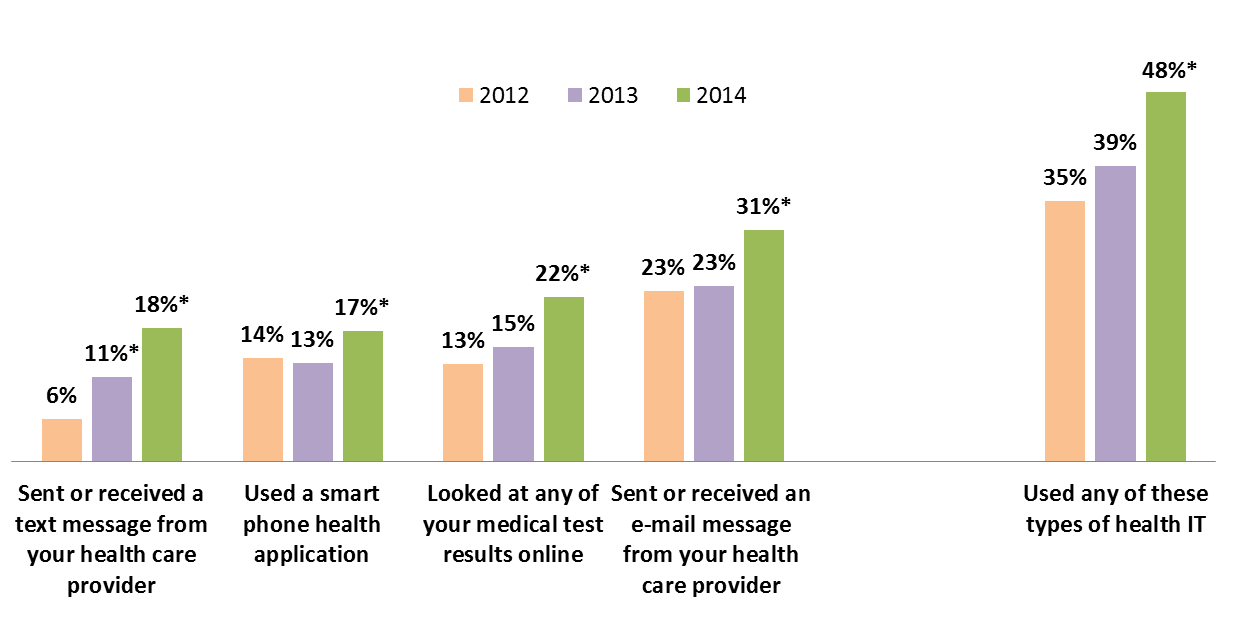
Individuals use of certain types of information technology to interact with their health care provider, view their personal health information, and track their health and wellness grew significantly between 2013 and 2014. The percent of individuals who…
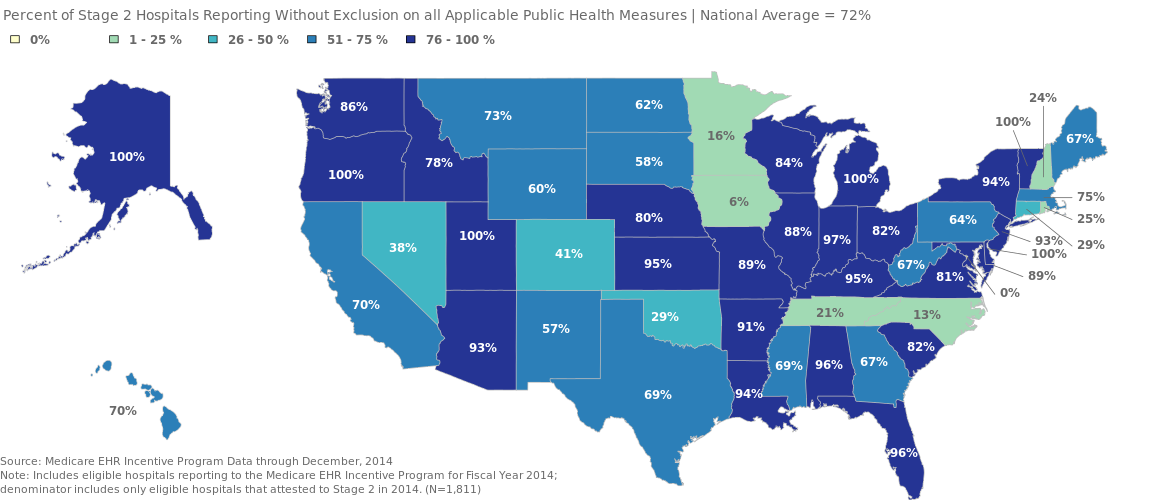
The CMS EHR Incentive Program provides incentive payments for eligible hospitals to adopt and meaningfully use certified health IT. Among the requirements to receive an incentive payment, participating hospitals must report on public health measures.…
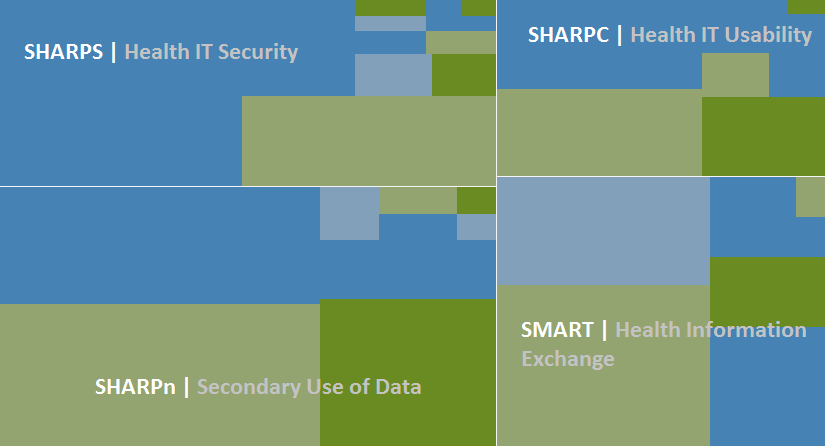
The Office of the National Coordinator for Health IT established the SHARP program to support innovative research and to address well-documented problems that impede the adoption and use of health IT. The SHARP program covers four subject areas:

Approximately 58k health care professionals attested to meaningful use of a certified EHR in 2011 through the Medicare EHR Incentive program. As of May 2014, 9 in 10 providers who attested to Meaningful Use in 2011 attested again in a following year. Of…
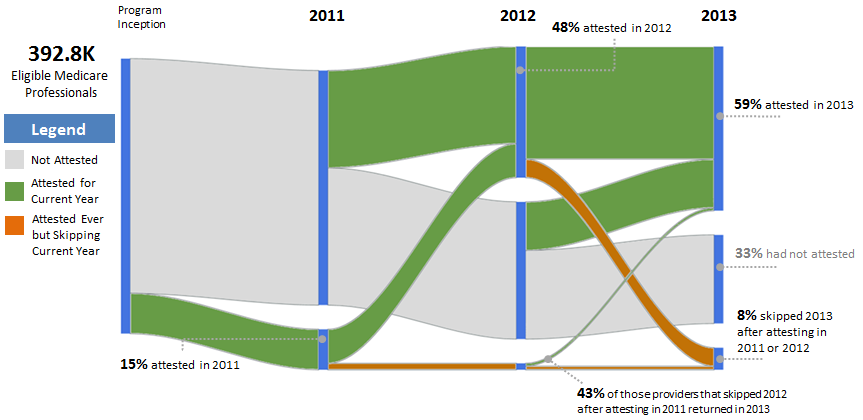
There are 392,800 providers eligible for the Medicare EHR Incentive Program. As of May 2014, approximately 67% had attested to meaningful use of a certified EHR through Medicare. Half of the Medicare-eligible providers attested in 2011 or 2012, and the…
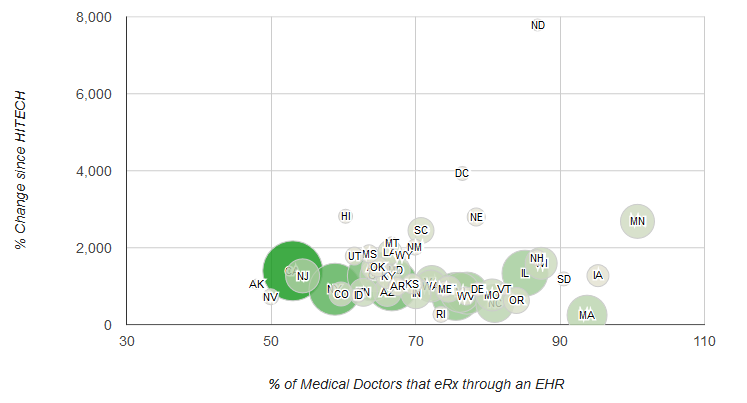
In December 2008, less than two months before the passage of the Health Information Technology for Economic and Clinical Health (HITECH) Act, fewer than 7% of all U.S. medical doctors electronically prescribed (e-prescribe) patient medications through an…
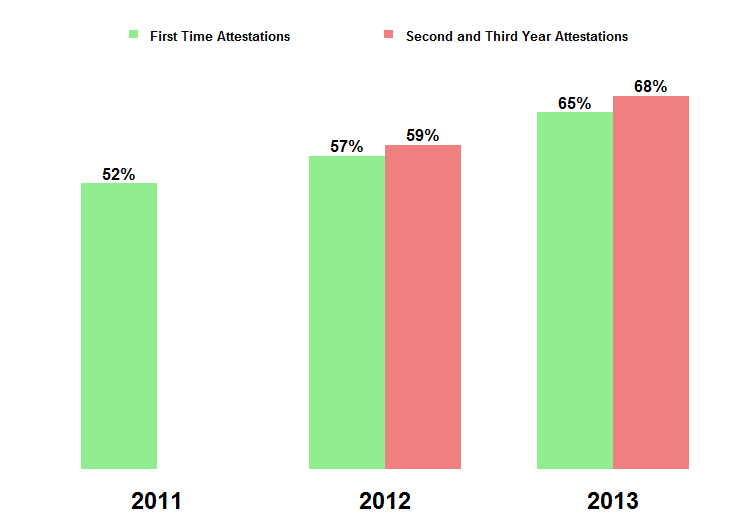
Approximately 7 out of 10 primary care physicians eligible for the Medicare EHR Incentive Program selected the Immunization Meaningful Use Menu measure without exclusion in 2013. 65 percent of 2013 first time attesters selected this measure without…

Stage 1 of the Meaningful Use program consists of 24 core and menu objectives. Hospitals began attesting to Stage 1 in 2011.
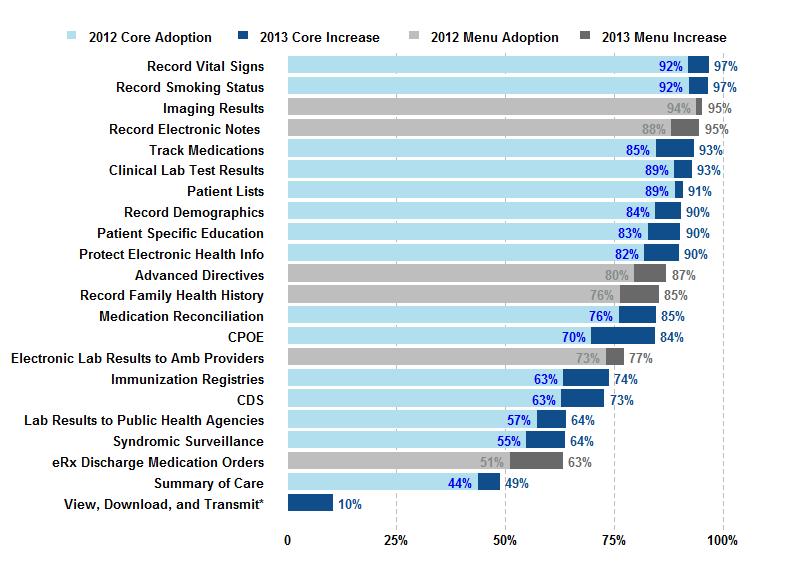
Stage Two of the Meaningful Use program consists of 22 core and menu objectives. A subset of hospitals will be eligible to begin attesting to these Stage 2 objectives in 2014. In 2013, adoption rates for 20 of these objectives were over 60 percent.…

Approximately 4 in 10 hospitals (41%) report that providers at the hospital are able to send and receive secure electronic messages containing patient health information (e.g., medications) to and from sources outside of the organization or hospital…
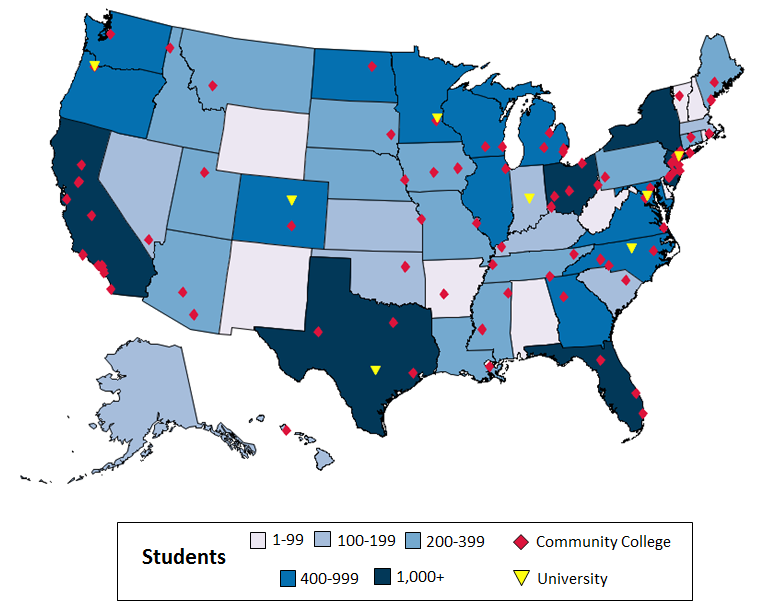
HITECH funded two distinct health IT workforce training programs: the University-Based Training Program and Community College Consortia Program. In total the two programs trained 21,437 students from all 50 states, the District of Columbia, Puerto Rico…
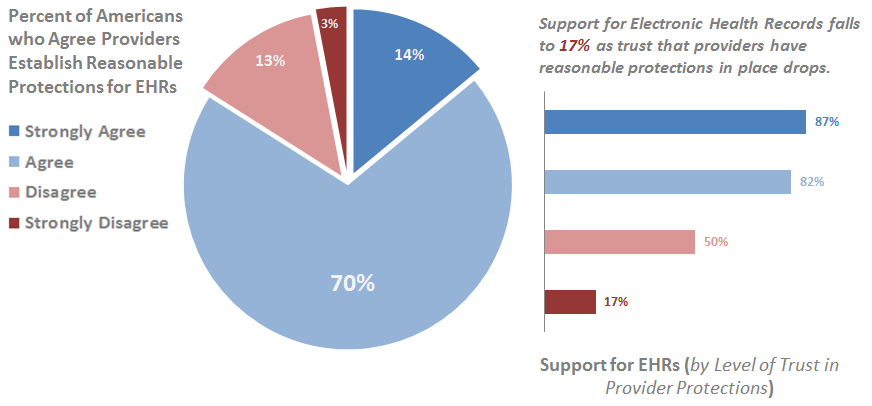
As the adoption of electronic health records (EHRs) and health information exchange (HIE) expands, and patient health information is increasingly stored and shared by providers electronically, it is important to monitor patient trust in providers'…
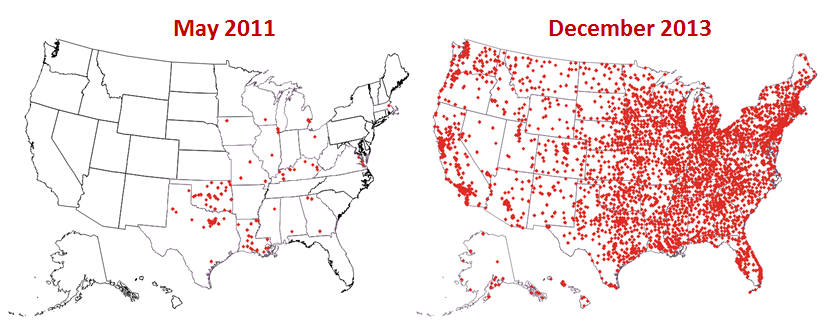
Hospitals have adopted and used Electronic Health Records (EHR) at a rapid rate across the country since the inception of the CMS EHR Incentive Program. 4,400 hospitals or 87 percent of all U.S. hospitals had received at least one incentive payment from…
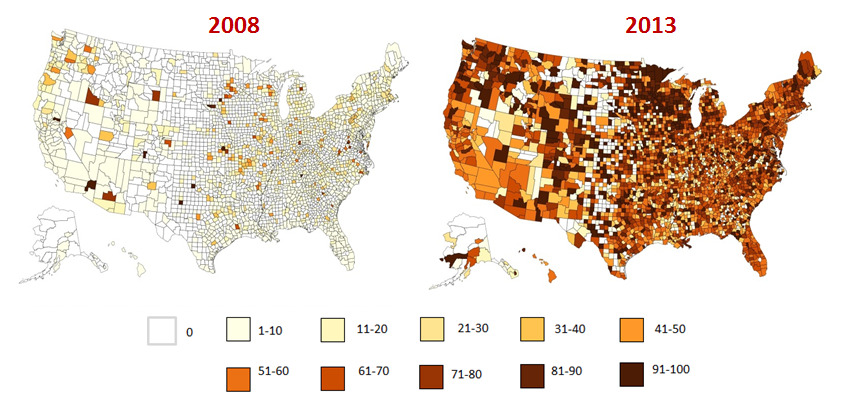
In the past five years, physician Electronic Health Record (EHR) adoption has surged, reaching all corners of the country. The percentage of physicians e-Prescribing via an EHR has accelerated from 7 percent in December 2008 to 66 percent as of December…

